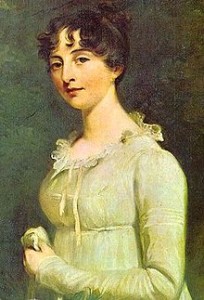 This January 22nd marks the 40th anniversary of Roe vs. Wade, a decision which has forever changed the landscape of human rights and dignity in America and has helped to usher in the “culture of death” in which we live. Over 55 million unborn children have been murdered by legal abortion and countless men and women have been permanently wounded by this unjust ruling by our Supreme Court. As Women of Grace, our mission is to transform the world one woman at a time by affirming women in their dignity and vocation as daughters of God and in their gift of authentic femininity. One of the ways that we accomplish this mission is through social activism, engaging in the cultural issues of our day.
This January 22nd marks the 40th anniversary of Roe vs. Wade, a decision which has forever changed the landscape of human rights and dignity in America and has helped to usher in the “culture of death” in which we live. Over 55 million unborn children have been murdered by legal abortion and countless men and women have been permanently wounded by this unjust ruling by our Supreme Court. As Women of Grace, our mission is to transform the world one woman at a time by affirming women in their dignity and vocation as daughters of God and in their gift of authentic femininity. One of the ways that we accomplish this mission is through social activism, engaging in the cultural issues of our day.
 We are pleased to announce that Women of Grace will be represented at this year’s March for Life in Washington, DC on January 25, 2013. We will stand in solidarity with the hundreds of thousands of people, young and old, who will gather at our nation’s capital to be the voice of the voiceless, marginalized, unborn children and their parents who are in need of God’s mercy.
We are pleased to announce that Women of Grace will be represented at this year’s March for Life in Washington, DC on January 25, 2013. We will stand in solidarity with the hundreds of thousands of people, young and old, who will gather at our nation’s capital to be the voice of the voiceless, marginalized, unborn children and their parents who are in need of God’s mercy.
There are two groups who will be marching together and we invite you to join them under the banner of “Women of Grace for Life.” One will leave from the National Shrine of the Immaculate Conception and the other will march from the mall area. Here are the details for the 2 groups:
Vicki Crispo and Peggy Pritchard will lead a group that will gather for Mass in the lower Crypt Church in the National Shrine of the Immaculate Conception for the 11:00 a.m. Mass on the day of the march offered by the Capuchin Franciscan Friars. They will head out to the March after we quickly eat and take the metro, which is close by, to Constitution Avenue and blend into the massive crowd as they begin their march from the Mall, up Constitution Avenue to the Supreme Court.
Their contact information is as follows:
Vicki Crispo
Phone: 717.324.3690
Email: wog325@gmail.com
Peggy Pritchard
Phone: 717.309.4633
Email: pegpritch@aol.com
Martha Nicolli will be leaving from South Florida. On the day of the March, their group will stand under the “Women of Grace for Life” banner in the mall area for the rally and speakers. Her contact information is:
Martha Nicolli
Phone: 561.212.8673
Email: Manicolli@aol.com
If you plan to attend, please wear a distinctive scarf, pink or purple, so it is easier to keep track of the group in the massive crowd. If you would like artwork for a banner, please email info@womenofgrace.com.
In addition to our physical presence at the March for Life, Women of Grace will join in solidarity with the U. S. Conference of Catholic Bishops who recently announced their campaign for Nine Days of Prayer, Penance & Pilgrimage: Marking the 40th Anniversary of Roe v. Wade. If you would like to participate in this novena, which will take place January 19 – 27, 2013, please click here.
We entrust all of these activities to the intercession of Our Lady of Guadalupe, patroness of Women of Grace.
Our Lady of Guadalupe,
we turn to you who are the protectress of unborn children and ask that you intercede for us,
so that we may more firmly resolve to join you in protecting all human life.
Let our prayers be united to your perpetual motherly intercession on behalf of those whose lives are threatened,
be they in the womb of their mother, on the bed of infirmity, or in the latter years of their life.
May our prayers also be coupled with peaceful action which witnesses to the goodness and dignity of all human life,
so that our firmness of purpose may give courage to those who are fearful and bring light to those who are blinded by sin.
Encourage those who will be involved in the March for Life;
help them to walk closely with God and to give voice to the cry of the oppressed,
in order to remind out nation of its commitment to life, liberty, and the pursuit of happiness for all people.
O Virgin Mother of God, present our petitions to your Son and ask Him to bless us with abundant life.
Amen.


















